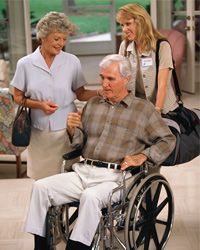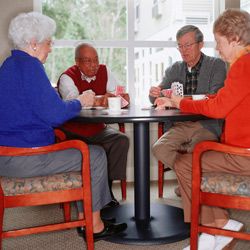When we're looking for our dream home, we usually have a list of must-have features in mind. Some people can't live without walk-in closets, natural light and built-in bookcases, while others require two-car garages and big backyards. When it comes to long-term care options for ourselves or a loved one, however, we often don't know exactly what we're looking for. And because the decision that an aging adult needs long-term care can already be difficult in and of itself, we may let emotions get in the way of an objective search.
As it turns out, we can consider long-term care facilities with the same critical eye we bring to crown molding or skylights. First, there are some basic decisions to be made regarding the level of care and supervision needed, the financial resources available to pay for the care -- and location, location, location. Once you have a list of places that fit those criteria, how do you pick? Take a look at the five things on this list for some must-have features in long-term care.
Advertisement




